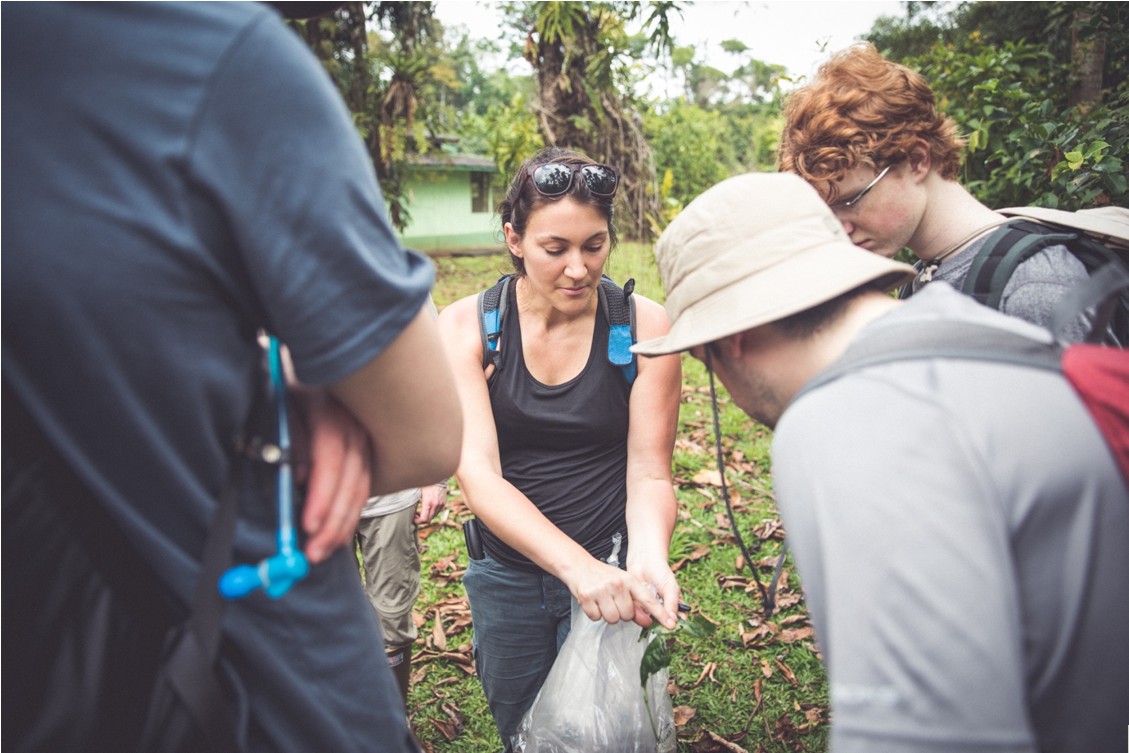Scientists have recently revealed concerning trends in the biodiversity of caterpillars and their parasites within a protected rainforest in Costa Rica. A study spanning 22 years, published in Scientific Reports, highlights significant decreases in these insect populations, linking these declines to extreme weather events and suggesting potential long-term consequences for ecosystem health.
The research focused on the Lepidoptera order, encompassing moths and butterflies, by meticulously collecting caterpillars that feed externally on leaves. Alongside these caterpillars, scientists also gathered their parasitoids – wasps (Hymenoptera) and flies (Diptera) – which are parasites that rely on caterpillars as hosts for their development, ultimately causing the host’s death. Many of these parasitoid species are highly specialized, targeting only specific types of caterpillar hosts.
The study’s findings indicate a worrying loss of dominant caterpillar groups. Over 40% of the 64 common caterpillar genera studied showed signs of decline. This reduction in caterpillar populations is predicted to lead to a significant decrease in parasitism rates, estimated to be around 30% in the coming century. These findings raise serious concerns about the degradation of crucial ecosystem services, particularly biocontrol, where parasitoids play a vital role in regulating agricultural pests like herbivorous insects.
According to Manu Saunders, an ecologist at the University of New England who was not involved in this research, “It’s the interactions between species, not just the number of species, that are critical for maintaining healthy and stable ecosystems and the services they provide.” This study underscores the delicate balance within ecosystems and the potential cascading effects of biodiversity loss.
The research was conducted at La Selva Biological Research Station, a protected area of 1,600 hectares (4,000 acres) situated on the Caribbean slope of Costa Rica’s Cordillera Central range. This isolated forest is surrounded by plantations dedicated to the global export of bananas, pineapples, and palm oil, highlighting the pressures even protected areas face.
Scientists attribute these declines, in part, to climate change. While many studies focus on rising temperatures, this research investigated the impact of rainfall patterns in lowland tropical environments. The study revealed that extreme weather events, especially heavy rainfall combined with increasing temperatures, were the most significant factors associated with the decline in insect diversity. Costa Rica, with its rich biodiversity, is particularly vulnerable to these climatic shifts.
Danielle Salcido, the lead author and doctoral candidate from the University of Nevada, Reno, emphasizes the broader implications, stating that La Selva “mirrors many lowland tropical forests: vulnerable to increases in temperature and flooding events, increased agricultural intensification, and marginalized protected areas.” She points out that even protected areas in regions like Costa Rica are “not immune to climate change or adjacent land-use changes.”
Extreme weather events, such as flooding, can decimate insect populations rapidly. Events lasting just a few days can wipe out entire groups of caterpillars or parasitoids, with impacts lasting months or even years—a phenomenon known as a time lag. Floods in one year can negatively impact parasitism rates in the following year. The specialized relationship between caterpillars and their parasitoids makes them particularly vulnerable to these disruptions, potentially leading to a decoupling of this crucial ecological partnership.
Salcido explains, “For a parasitoid, decoupling from its host leads to a loss of abundance and diversity, especially for those that specialize in a single host species.” She warns that if caterpillar populations are no longer controlled by parasitoids, it could result in pest outbreaks.
The statistical analysis highlighted that time lags had the most significant impact on declines in parasitism and overall species richness. Saunders found this aspect particularly noteworthy, stating it “means that, while climate factors were influencing insect populations to some degree, other unmeasured factors were also having a strong effect.”
These findings suggest that climate change is not the sole driver of these declines, and further research is needed to fully understand the complex factors at play. Saunders emphasizes, “Ecosystems are affected by many different drivers and their interactions. We can never pinpoint one single factor causing biodiversity loss everywhere.”
Addressing these declines and restoring ecosystem health requires strong political commitment. Salcido urges voters to support leaders who take climate change seriously and advocate for international efforts to reduce carbon emissions. Increased support for tropical ecology research and international collaboration, involving both local and global communities in long-term data collection, is also crucial. She also advocates for empowering citizen scientists and fostering environmental advocacy.
Salcido concludes, “Large-scale change requires grassroots movements to drive top-down policy change. We must promote and demand collective and synchronous policy, holding governments and industry accountable and keeping this issue in the public consciousness.”
Banner image: An Apatelodidae caterpillar on a host plant in a studio setting. Image by Danielle Salcido.
Citation:
Salcido, D. M., Forister, M. L., Garcia Lopez, H., & Dyer, L. A. (2020). Loss of dominant caterpillar genera in a protected tropical forest. Scientific Reports, 10(422). doi:10.1038/s41598-019-57226-9
Credits:
Maria Angeles Salazar, Content Production Manager
Topics:
Animals, Biodiversity, Climate Change, Conservation, Ecosystems, Extreme Weather, Insects, Research, Rainforest Biodiversity, Rainforests, Wildlife, Central America, Costa Rica, Latin America
